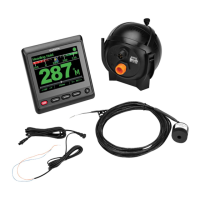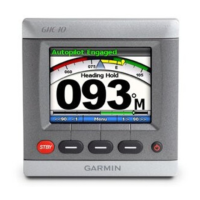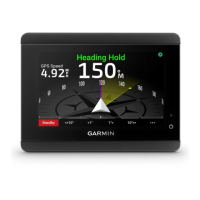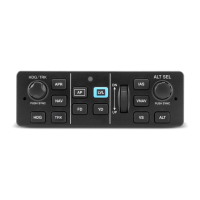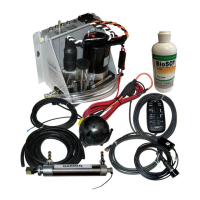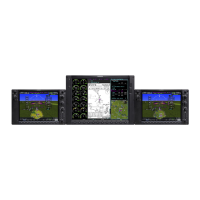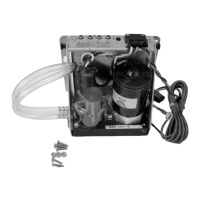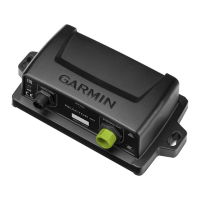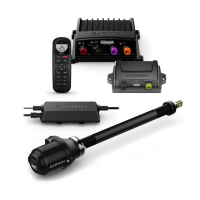GHP12InstallationInstructions 25
Although all of the conguration is typically completed automatically through wizards, you can manually adjust any setting (page 19).
NOTE: Depending upon the conguration of the autopilot, certain settings may not appear.
NOTE: On a powerboat, each time you change to the Speed Source setting, you must review the Verify Tachometer, Low RPM Limit, High RPM
Limit, Planing RPM, Planing Speed, or Max Speed settings, where applicable, prior to performing the autotune procedure (page 17).
Dealer Autopilot
Conguration
Vessel Type Allows you to select the type of vessel on which the autopilot is installed.
Speed Source Setup
(power boat only)
Speed Source Allows you to select NMEA 2000 tachometer, GPS speed, or the engine (or engines) to which
you connected the tachometer sensor from the CCU.
Speed Source Setup
(power boat only)
Verify Tachometer Allows you to compare the RPM readings on the GHC 10 with the tachometers on the
dashboard of your boat.
Speed Source Setup
(power boat only)
Planing RPM Allows you to adjust the RPM reading on the GHC 10 at the point your boat transitions from
displacement to planing speed. If the value does not match the value on the GHC 10, use the
arrows to adjust the value.
Speed Source Setup
(power boat only)
Planing Speed Allows you to adjust the planing speed of your boat. If the value does not match the value on
the GHC 10, use the arrows to adjust the value.
Speed Source Setup
(power boat only)
Low RPM Limit Allows you to adjust lowest RPM point of your boat. If the value does not match the value on
the GHC 10, use the arrows to adjust the value.
Speed Source Setup
(power boat only)
High RPM Limit Allows you to adjust the highest RPM point of your boat. If the value does not match the
value on the GHC 10, use the arrows to adjust the value.
Speed Source Setup
(power boat only)
Max Speed Allows you to adjust the maximum speed of your boat. If the value does not match the value
on the GHC 10, use the arrows to adjust the value.
Autopilot Tuning > Rudder
Gains
(sailboat only)
Gain Allows you to adjust how tightly the rudder holds a heading and makes turns.
If you set this value too high, the autopilot may be overactive, attempting to constantly adjust
the heading at the slightest deviation. An overactive autopilot can cause excess wear and
tear on the drive unit (page 18).
Autopilot Tuning > Rudder
Gains
(sailboat only)
Counter Gain Allows you to adjust how tightly the rudder corrects turn overshoot.
If you set this value too high, the autopilot can overshoot the turn again when attempting to
counter the original turn (page 18).
Autopilot Tuning > Rudder
Gains
(power boat only)
Low Speed Gain Allows you to set the rudder gain for low speeds.
This setting applies to the vessel when operating below planing speed.
If you set this value too high, the autopilot may be overactive, attempting to constantly adjust
the heading at the slightest deviation. An overactive autopilot can cause excess wear and
tear on the drive unit (page 18).
Autopilot Tuning > Rudder
Gains
(power boat only)
Low Speed Counter Allows you to set the rudder gain counter-correction for low speeds.
This setting applies to the vessel when operating below planing speed.
If you set this value too high, the autopilot may be overactive, attempting to constantly adjust
the heading at the slightest deviation. An overactive autopilot can cause excess wear and
tear on the drive unit (page 18).
Autopilot Tuning > Rudder
Gains
(power boat only)
High Speed Gain Allows you to set the rudder gain for high speeds.
This setting applies to the vessel when operating above planing speed.
If you set this value too high, the autopilot may be overactive, attempting to constantly adjust
the heading at the slightest deviation. An overactive autopilot can cause excess wear and
tear on the drive unit (page 18).
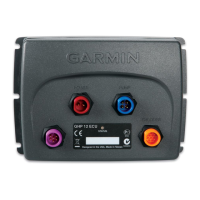
